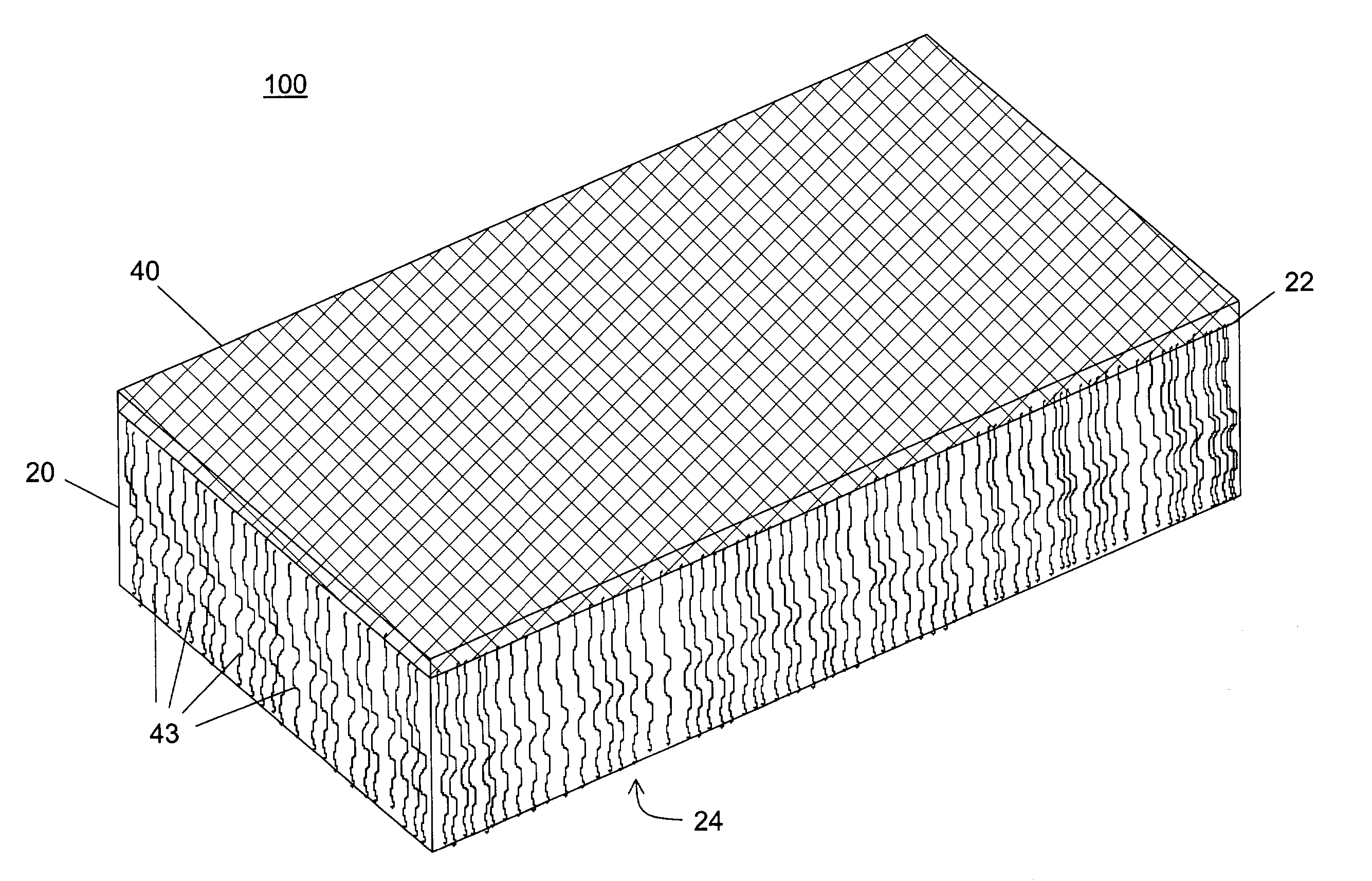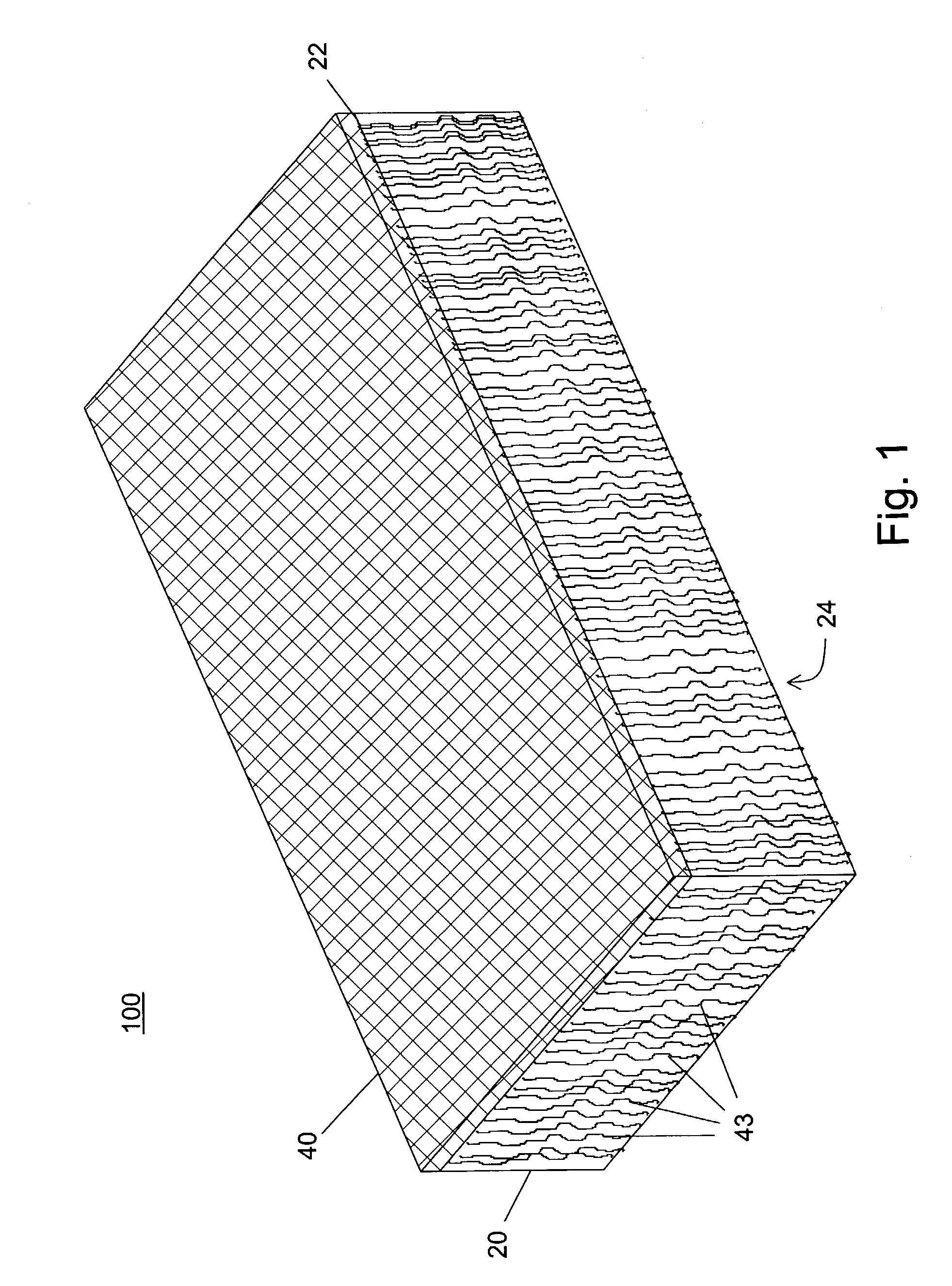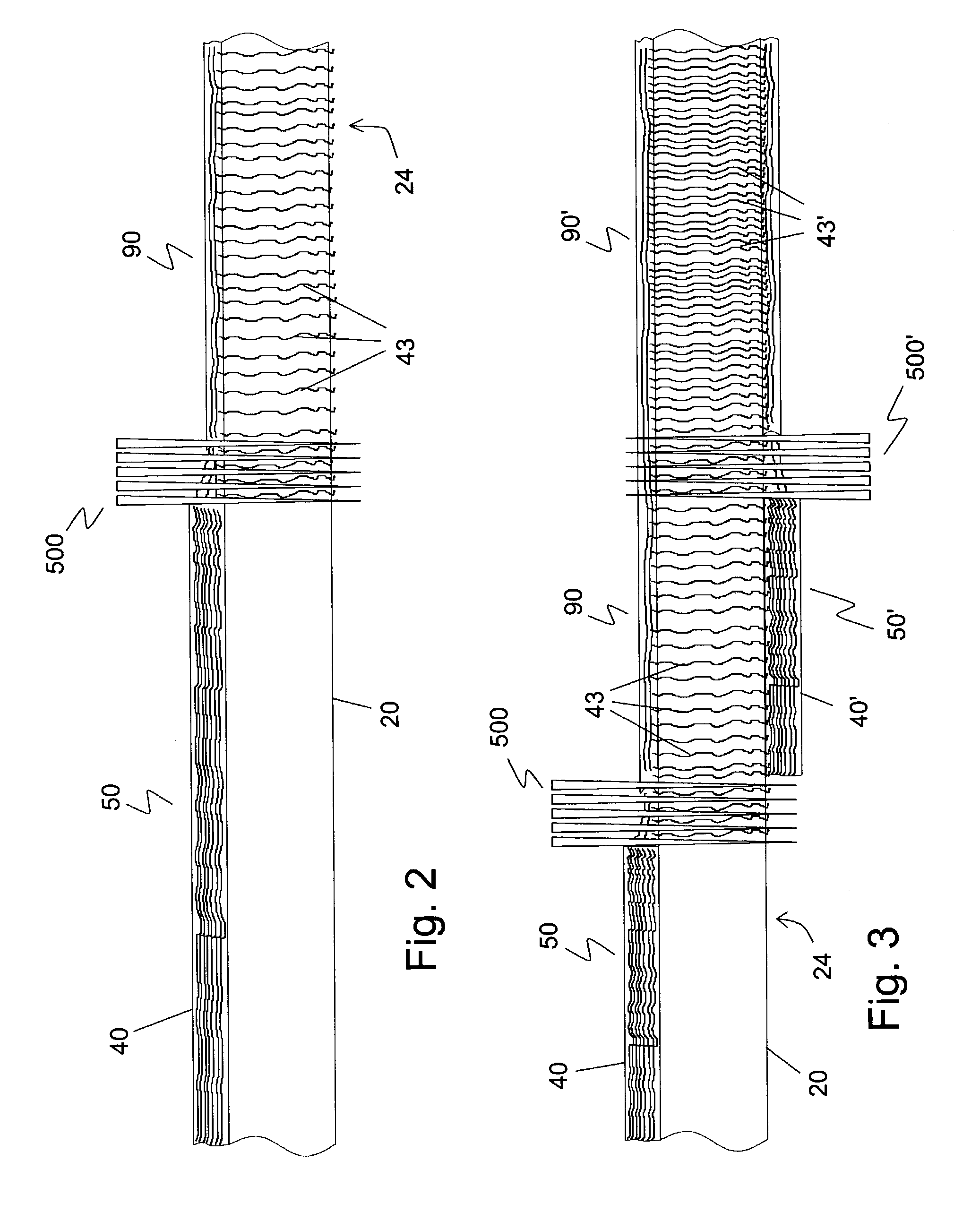Multiplanar EMI shielding gasket and method of making
a shielding gasket and multi-planar technology, applied in the field of emi shielding gaskets, can solve the problems of reducing the efficiency of the ground conduction path, affecting the electrical efficiency of the ground, and affecting the use of raw materials, so as to reduce the cost of raw materials used, widen the range of applications, and facilitate the use of cornering.
- Summary
- Abstract
- Description
- Claims
- Application Information
AI Technical Summary
Benefits of technology
Problems solved by technology
Method used
Image
Examples
second embodiment
[0036]Turning now to FIG. 3, there is illustrated a cross-sectional view of the needleloom process making EMI gasket material 100. As described above, conductive fiber web 40 is brought into a layered relationship with foam core 20 forming a multiplanar assembly 50. Multiplanar assembly 50 is then subjected to a needleloom 500 that processes the multiplanar assembly 50. Needleloom 500 intersperses individual fibers 43 of web 40 from web 40 through foam core 20 so that a plurality of individual fibers 43 protrude out of bottom surface 24. The needleloom process interlocks, or binds, fiber web 40 to foam core 20 forming multiplanar core 90. A second conductive fiber web 40′ is then brought into a layered relationship with foam core 20 at bottom surface 24 forming a multiplanar assembly 50′ composed of multiplanar core 90 and second conductive fiber web 40′. Multiplanar assembly 50′ is then subjected to a second needleloom 500′ that processes the multiplanar assembly 50′. Needleloom 50...
third embodiment
[0037]In instances where the thickness of foam core 20 is too thin such as, for example, less than five millimeters in thickness, the gasket material 100 may lack a certain needed firmness, stiffness or rigidity. FIG. 4 is a cross-sectional view of the needleloom process making EMI gasket material 100. A non-conductive, stiffening fabric 30 is brought into a layered relationship between conductive fiber web 40 and foam core 20 forming a multiplanar assembly 150. Multiplanar assembly 150 is then subjected to a needleloom 500 that processes the multiplanar assembly 150. Needleloom 500 intersperses individual fibers 43 of web 40 from web 40 through stiffening fabric 30 and foam core 20 so that a plurality of individual fibers 43 protrude out of bottom surface 24. The needleloom process interlocks, or binds, fiber web 40 to stiffening fabric 30 and foam core 20 forming multiplanar core 190.
[0038]Stiffening fabric 30 is preferably a web of nonconductive fibers having a blend of about 4 t...
PUM
| Property | Measurement | Unit |
|---|---|---|
| softening point | aaaaa | aaaaa |
| thickness | aaaaa | aaaaa |
| size | aaaaa | aaaaa |
Abstract
Description
Claims
Application Information
 Login to View More
Login to View More - R&D
- Intellectual Property
- Life Sciences
- Materials
- Tech Scout
- Unparalleled Data Quality
- Higher Quality Content
- 60% Fewer Hallucinations
Browse by: Latest US Patents, China's latest patents, Technical Efficacy Thesaurus, Application Domain, Technology Topic, Popular Technical Reports.
© 2025 PatSnap. All rights reserved.Legal|Privacy policy|Modern Slavery Act Transparency Statement|Sitemap|About US| Contact US: help@patsnap.com



